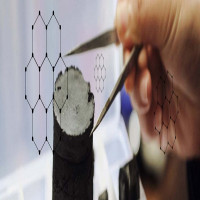Characterization and Application of Sodium Surfactin

Introduction of Sodium Surfactin
Sodium surfactin is a natural, biodegradable surfactant derived from the fermentation of certain strains of Bacillus subtilis bacteria. It belongs to a class of compounds known as lipopeptides, which are amphiphilic molecules composed of both hydrophobic and hydrophilic regions. Sodium surfactin is known for its powerful surface tension reducing properties, making it an effective emulsifier, foaming agent, and detergent.
Physicochemical Properties of Sodium Surfactin
Surface tension reduction: Sodium surfactin is known for its excellent surface-active properties, effectively reducing the surface tension of aqueous solutions. This allows for improved emulsification, foaming, and dispersion of various substances.
Self-assembly: Sodium surfactin molecules can self-assemble into micelles or other structures in solution due to the amphiphilic nature of the molecule. This self-assembly property is key to its surfactant activity.
Solubility: Sodium surfactin is water-soluble, making it suitable for various applications in aqueous systems. It can also exhibit varying solubility in different organic solvents depending on the specific structure and chain length.
Stability: Sodium surfactin shows stability over a wide range of environmental conditions, including temperature, pH, and salinity. This stability is crucial for its application in diverse industries such as pharmaceuticals, agriculture, and environmental remediation.
Emulsification: Sodium surfactin can form stable emulsions by reducing the interfacial tension between immiscible liquids. This emulsifying property makes it useful in the formulation of cosmetics, food products, and microbial-enhanced oil recovery.
Foaming: Due to its surface-active properties, sodium surfactin can generate stable foams with enhanced foam stability. This property finds applications in the food industry, especially in the production of bakery products and whipped toppings.
Synthesis Methods of Sodium Surfactin
The synthesis of sodium surfactin usually involves organic synthesis methods or genetic engineering techniques.
Organic synthesis method: the organic synthesis of sodium surfactin is usually achieved by solid phase synthesis or liquid phase synthesis. These methods use chemical synthesis steps to gradually connect amino acids or amino acid derivatives to form peptide chains. Then, the target peptide is synthesized using appropriate protective groups, activators, and couplers. Finally, the target product was obtained by de-protection, purification, and structure identification.
Genetic engineering technology: Another method of producing sodium surfactin is to use genetic engineering technology. This method involves introducing the gene sequence encoding sodium surfactin into a suitable host microorganism or eukaryotic cell, and expressing and producing the target protein within it. These host cells synthesize and produce lipopeptides by expressing these genes.
Regardless of whether organic synthesis or genetic engineering technology is used, the synthesis of sodium surfactin requires strict purification and structural identification to ensure the purity and target structure of the synthetic product.
Applications of Sodium Surfactin
Oil recovery: Sodium surfactin is effective in enhancing oil recovery by reducing the interfacial tension between oil and water, leading to improved emulsification and mobilization of trapped oil droplets in porous formations.
Agriculture: Sodium surfactin can be used as a biopesticide or biofertilizer due to its antimicrobial properties. It can help in controlling plant pathogens and promoting plant growth by enhancing nutrient uptake.
Cosmetics: Sodium surfactin is used in the cosmetic industry for its foaming, emulsifying, and antimicrobial properties. It is found in shampoos, lotions, creams, and other personal care products.
Bioremediation: Sodium surfactin can be employed in the bioremediation of contaminated soils and water bodies by enhancing the solubility and bioavailability of hydrophobic pollutants, facilitating their degradation by microorganisms.
Food industry: Sodium surfactin is used as a food-grade biosurfactant and emulsifier in various food products such as sauces, dressings, and dairy products. It can improve the stability and texture of food formulations.
Pharmaceuticals: Sodium surfactin is being investigated for its potential applications in drug delivery systems, as it can enhance the solubility and bioavailability of poorly water-soluble drugs.
Detergents and cleaning products: Sodium surfactin is utilized in detergents and cleaning products for its ability to break down dirt and grease, emulsify oils, and enhance the cleaning efficiency of the formulations.
Note: IndiBlogHub features both user-submitted and editorial content. We do not verify third-party contributions. Read our Disclaimer and Privacy Policyfor details.







